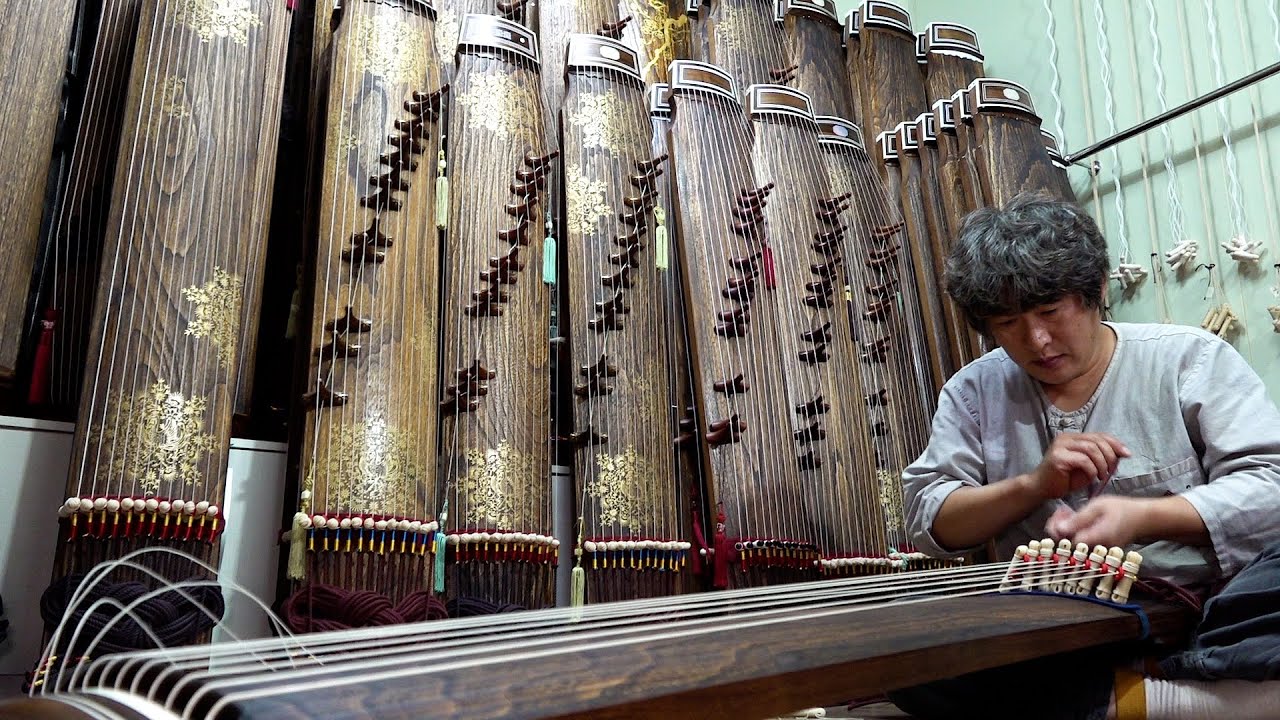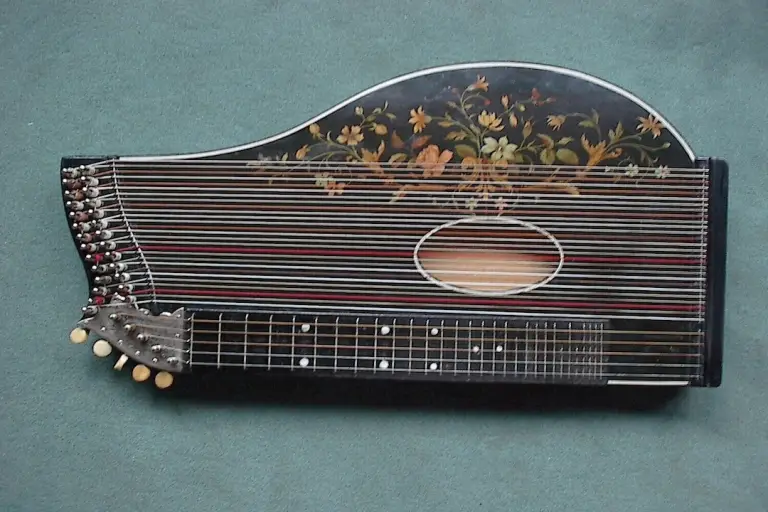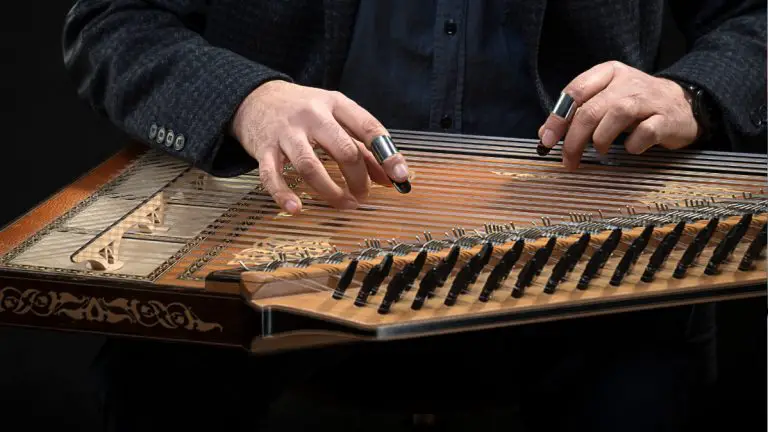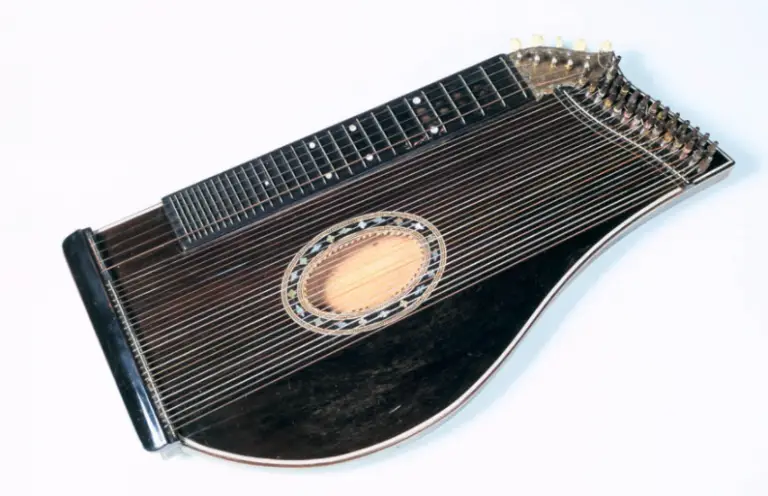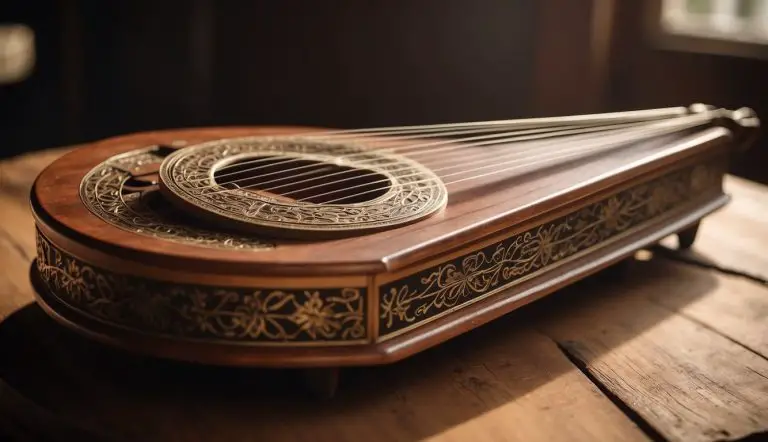Popular Zither Music Songs: Top Melodies to Discover
Folkstrings.com is reader-supported. When you buy through links on our site, we may earn a small commission.
The zither, a stringed musical instrument with a history that spans across cultures and centuries, has found a notable place within both traditional and contemporary music spheres.
As a versatile instrument known for its resonant melodies, zithers appear in various forms—from the simple Appalachian dulcimer to the more complex Chinese guzheng.
They have played a significant role in folk and classical genres, making the zither an enduring addition to the musical lineage.
Musicians take pride in the rich tapestry of sounds this instrument can produce, often incorporating it into modern compositions that respect its storied past while propelling it into the limelight of today’s music scene.
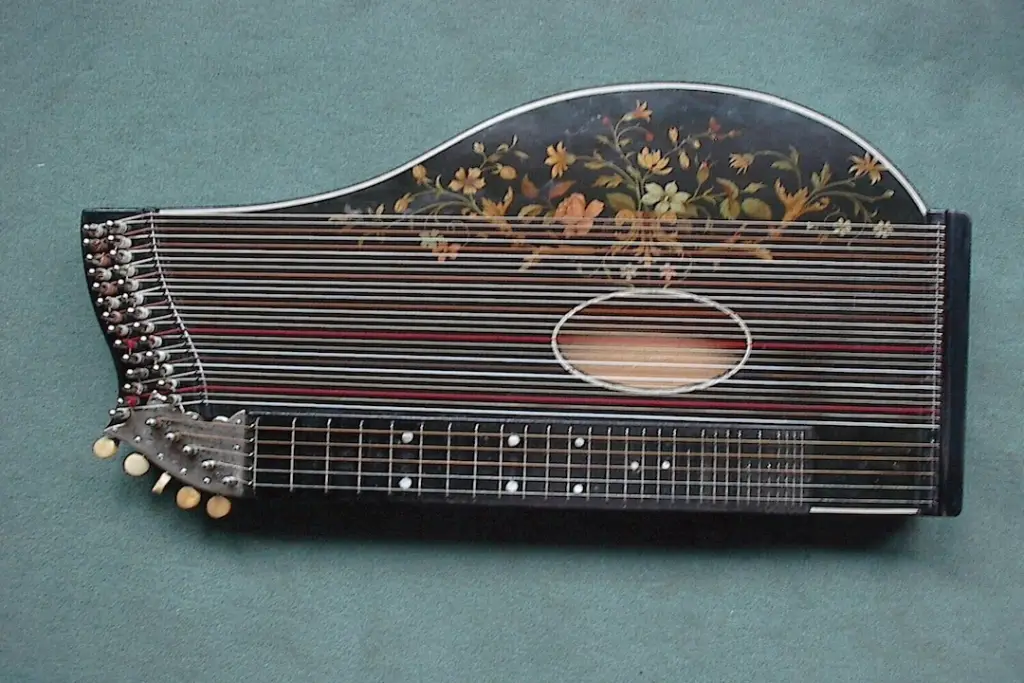
Strolling through history into the modern age, the influence of the zither can be traced in a variety of popular music.
Iconic pieces like “The Lament of Empress Chen,” as well as other songs that have woven their way from temples to the public’s affection, showcase the emotional depth that the zither can evoke.
Its presence in school choirs and as a focal point for automatic musical transcription studies speaks to the instrument’s adaptability and continual innovation.
The popularity of the zither is not just a testament to its distinct sound, but also its capacity to connect with modern audiences and adapt to new musical contexts.
Key Points
- The zither holds a significant place in music with its melodious and adaptable nature.
- Its rich history is reflected in both folk and classical music, captivating musicians and audiences.
- Learning and innovations in zither music have kept it popular in modern musical compositions.
Table of Contents
Historical Context of the Zither

In my exploration of the zither’s history, I’ve uncovered fascinating facts about its origins, famous influences, and cultural significance. Let me share with you how this instrument has resonated across continents and through time.
Origins of Zither Music
The zither, with its characteristic strings that vary in number, is an instrument with ancient roots.
In Asia, particularly in China, the zither appears in forms like the qin or the guzheng, with histories dating back over 2,500 years.
This tradition speaks of a rich cultural past where the zither was not merely an instrument but a medium of philosophical expression.
In Central Europe, the zither found its distinct voice in countries like Germany, becoming an integral part of the regional folk music.
Influence of Anton Karas and ‘The Third Man’
One cannot discuss the modern popularization of the zither without mentioning Anton Karas.
His iconic score for the 1949 film “The Third Man” singularly brought the zither to the forefront in Europe and beyond.
My discovery of Karas’ soundtrack introduced me to a nuanced, yet spirited sound of the zither that won international acclaim and redefined the instrument’s place in popular culture.
Zither Across Cultures
The zither demonstrates versatility across cultures; each with its particular style.
In China and other parts of Asia, the instrument is central to classical and folk music.
It’s fascinating how each culture has adapted the zither to fit its unique narrative.
Europe, especially Central Europe, acknowledges the zither for its folksy tunes that often carry a hint of nostalgia.
The zither’s ability to bridge cultures is a testament to its universal appeal.
Playing the Zither
When I approach the zither, my focus is on the harmony of techniques and the instrument’s upkeep which ensures a melodious outcome.
The magical sounds come to life through a blend of intricate finger techniques and regular tuning.
Techniques and Styles
I often use my fingers to pluck the strings in a method known as “tremolo” to produce a fluttering sound, which is characteristic of zither music.
To perform this, I rapidly move my right hand back and forth over a string.
Here’s how I typically organize my playing technique:
- Right Hand: For precision, I use a combination of my thumb, index, and middle fingers. Occasionally, I adopt the use of a plectrum or pick, which helps me achieve a sharper and louder tone.
- Strumming: It’s not as common as plucking, but when I strum, I gently sweep my fingers or a plectrum across the strings, which gives a fuller chordal sound.
- Fretboard Work: If my zither has a fretboard, I press the strings to it with my left hand to change the pitch, similar to playing a guitar.
Tuning and Maintenance
Zithers require regular tuning to sound their best, and I tune mine before each practice session or performance.
Here is a simple breakdown of the tuning process:
- Identify the base note: I start by tuning one of the open strings to a known pitch, using a tuning fork or electronic tuner.
- Tune adjacent strings: I move on to the other strings, adjusting each one until they’re in harmony with the base note.
Maintenance is as crucial as playing; I ensure my zither is always clean and stored properly to maintain its quality. Here are a couple of maintenance tips I follow:
- Regularly dust the zither: I use a soft, dry cloth to remove any dust or dirt.
- Store properly: After playing, I keep my zither in its case, away from extreme temperatures and humidity.
Popular Zither Music and Compositions
Discovering the vast world of zither music, I’ve come to appreciate its intricate melodies and the talent of contemporary zither artists. The zither’s flexibility caters to both traditional folk melodies and modern compositions.
Iconic Zither Melodies
In my journey through zither music, the iconic Harry Lime Theme from the film The Third Man stands out as a quintessential zither melody.
Composed by Anton Karas, it’s a prime example of how a single instrumental track can define the atmosphere of a cinematic masterpiece.
Similarly, Chinese qin music resonates with historical richness; their elegant melodies often evoke images of ancient courts and natural landscapes.
- The Harry Lime Theme (The Third Man)
- Traditional Qin pieces
- Lament of Empress Chen
- Folk Music from Various Cultures
Contemporary Zither Artists
Moving onto contemporary times, zither music remains vibrant thanks to skilled musicians who keep the tradition alive while infusing it with modern sensibilities.
For instance, the innovations in Chinese zheng music have been notably influenced by modern players.
This transformation can be seen in new compositions that blend classical elements with fresh interpretations, creating engaging pieces that bridge the past and present.
Artists such as PJ Harvey have incorporated zither sounds into their music, showcasing the instrument’s versatility.
- Contemporary Zheng Musicians
- New compositions
- Classical fusion pieces
- Western Artists
- PJ Harvey using zither in alternative rock tracks
Types of Zithers
The zither family encompasses a vast array of instruments that differ greatly in form and sound. I’m excited to explore some iconic types, particularly highlighting the disparities between concert and alpine zithers, as well as introducing you to a variety of world zither variations.
Differences Between Concert and Alpine Zithers
The Concert zither and the Alpine zither are two central figures in the European zither tradition.
The concert zither typically consists of 29 to 35 strings, with a fretted fingerboard to play melodies on one side and accompanying chords on the other.
In contrast, the Alpine zither has fewer strings, usually around 42, which are grouped together to facilitate the playing of chords, making it highly favored for accompanying folk songs.
The concert zither, however, is more commonly employed in classical music settings due to its complex and melodious capabilities.
World Zither Variations
Venturing beyond Europe, the zither family spans across the globe, each with unique characteristics. Here’s an overview of some:
- Asia: The guqin and guzheng are Chinese zithers that have a rich tradition dating back thousands of years. The guqin, with its seven strings, is known for its deep, resonant sound. The guzheng has a larger range of 21 to 25 strings and is often used in both traditional and contemporary music. Japan’s koto, with 13 strings, is similar to the guzheng and is played using picks worn on the fingers.
- Middle East: The santur is a hammered dulcimer found in the Persian tradition, characterized by its trapezoidal shape and played with delicate mallets, producing a crisp, vibrant sound.
- Appalachia: The Appalachian dulcimer, also known as the mountain dulcimer, is a staple in American folk music. It has typically three to four strings and is played on the lap with a simple strumming or picking technique.
- Europe: The cimbalom, a large Hungarian dulcimer, is a concert instrument often found in Roma (Gypsy) music as well as classical compositions.
- General: Instruments like the autoharp and psaltery are widely found around the world. The autoharp is strummed or plucked and has a set of dampers (buttons) to selectively mute wrong notes, making it user-friendly. The psaltery, commonly found in medieval and renaissance music, is typically played by plucking the strings with the fingers or a plectrum.
The Zither in Modern Music
The sound of the zither resonates beyond its traditional roots, finding a place in contemporary genres and cinema soundtracks. In these genres, its unique timbre captures the imagination of listeners worldwide.
Influence on Modern Genres
The zither’s presence is felt across various modern music genres, from folk to jazz. Artists like PJ Harvey have embraced the zither’s ethereal qualities. These are especially evident in her album “Let England Shake,” which paints auditory landscapes of London’s history intertwining with personal narratives. In the folk scene, historical figures such as Mother Maybelle of the Carter Family brought the zither into the limelight in the United States. They did this by incorporating its strings into the tapestry of American folk music.
Zither in Film Scores
When it comes to film scores, the zither is iconic. I am particularly fond of the “Harry Lime Theme” from the movie “The Third Man.” This soundtrack exemplifies the zither’s capacity to set the mood and resonate with audiences. It remains one of the most recognizable melodies in cinema history. The zither not only complements on-screen action but also often carries emotional weight, underscoring pivotal moments with its distinctive sound.
Learning and Resources
In my journey with the zither, a beautiful stringed instrument, I’ve found a wealth of resources that helped me hone my plucking techniques and understand complex chords. Whether you’re a beginner or an intermediate player, these resources can be invaluable.
Finding a Zither Teacher
When I started learning the zither, the first thing I looked for was a knowledgeable teacher. Personalized lessons with an experienced musician can accelerate your learning process. To find a teacher, I suggest visiting local music schools or searching online directories like Music Teachers National Association (MTNA). Many highly skilled artists offer private lessons or group classes, providing opportunities to delve into various musical repertoires.
Online Tutorials and Communities
I found that the internet is flooded with tutorials that can assist in learning at my own pace. Platforms like YouTube have an array of instructional videos covering everything from basic chords to advanced compositions. Additionally, joining a zither online community or forum, such as ZitherForum.com, has been helpful for me. These communities are where zither enthusiasts and musicians share their knowledge, tips, and arrange meet-ups or virtual sessions.
- Key Online Resources:
- YouTube: For video tutorials ranging from beginner to advanced levels.
- Online Forums: To connect with other zither players and teachers.
- Social Media: Follow professional zither artists for inspiration and tips.
Frequently Asked Questions
In this section, I’ll cover some of the most common inquiries about zither music, from renowned players to the essentials for beginners.
Who are some renowned zither players internationally?
Some of the most acclaimed international zither players include musicians like Lunlun Zou, Wang Changyuan, and Grammy Award-winner Wu Man.
They have contributed significantly to the global recognition of the instrument.
Which songs are considered classics in Guzheng music?
Classics in Guzheng music often encompass pieces such as “Fisherman’s Song at Dusk” and “High Mountain Flowing Water.”
These songs have withstood the test of time and remain benchmarks of traditional Guzheng repertoire.
How does traditional Chinese zither music differ from contemporary zither music?
Traditional Chinese zither music is typically rooted in historical and cultural themes, using pentatonic scales.
Meanwhile, contemporary zither music frequently incorporates a wider range of musical styles. It may also blend both Eastern and Western musical elements.
Can you list some influential traditional Chinese music pieces featuring the zither?
Influential traditional Chinese music pieces featuring the zither include “Autumn Moon Over the Han Palace” and “The Evening Song of the Drunken Fisherman.”
These pieces are renowned for their musical portrayal of nature and emotion.
What are the distinguishing characteristics of the Konghou compared to other zither instruments?
The Konghou is an ancient Chinese harp-like zither, distinguished by its arched structure. This structure allows for a playing style that produces glissando and vibrato effects unlike other zither family instruments.
What should beginners know about starting to learn zither music?
Beginners should start by familiarizing themselves with the zither’s layout. They should also learn proper hand techniques and basic plucking patterns.
They should learn foundational songs to build up their skills gradually. Always focus on precision and tone quality.
Author Profile
Latest entries
Affiliates:
This post may contain affiliate links that at no additional cost to you, the site may earn a small commission. We only recommend products we would use ourselves and all opinions expressed on this site are our own.
Accuracy Advice:
While we strive to provide up-to-date and accurate information, the content in this article may not reflect the most current research or medical guidelines. We encourage readers to do further research and consult with professionals for more personalized advice.
Our Recommendations:
The products and services mentioned in any of our articles are recommended based on our independent research and personal experience. We are not sponsored by any company. We aim to suggest products and services we believe are of high quality and could be beneficial to our readers.

